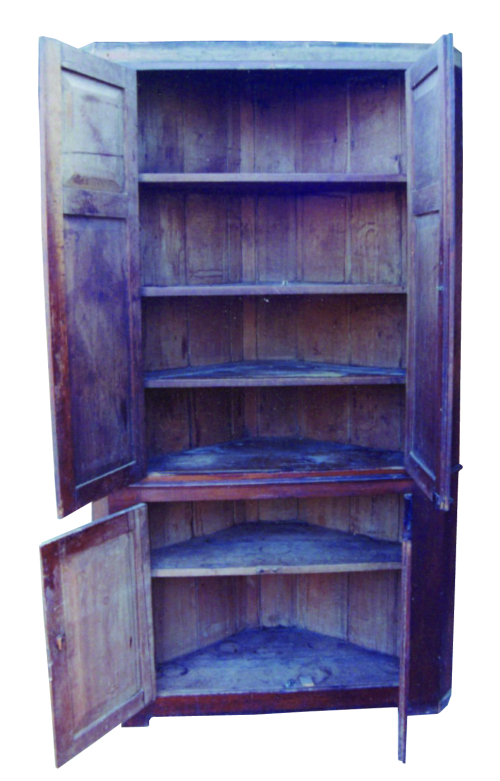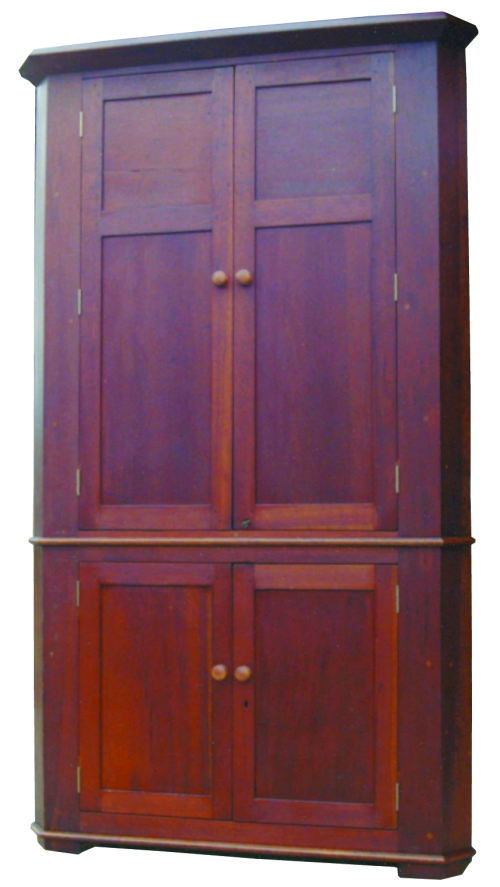|
|
|
| This was a rebuild and finish project. This is a
corner cabinet known locally as a "Lincoln cupboard" that my grandmother owned
and was a fixture in her house in Tennessee. It was located in an area of the house with a
slanted floor and had conformed to it and as such was considerably warped. According to my family, this cabinet is quite old and had been cut down at some point. The exact age of the cupboard is not known but it appears to have been made by a local craftsman (or relative) 100 years or more ago. The exterior is made of Cherry with a Black Polar back and shelves. |
 |
 |
In order to begin the restoration of this cabinet, I took everything apart except for the doors and the front of the face frame. In this view it is laid out after disassembly. The cabinet was constructed using square nails and some form of glue and pegs were appropriate. The reason the cabinet had warped is due to its age and the fact that it had no frame other than the face frame. I wanted to keep the piece visually the same but wanted to ensure that it could not warp. To that end I devised a frame system that is invisible except for the flat section of the back which is not discernable as part of the framework. In order to get all of the pieces back together in a coherent manner, it was necessary to flatten the shelves (cupped by one to two inches) and make them uniform. This also required me to add some small amount of material to the shelves to make up for that lost in the flattening and truing process. |
| This is the cabinet after "restoration";
I finished the exterior with several coats of Danish oil ultimately applied with 600 grit
sandpaper, the surface texture is very smooth. During the cleaning phase the Cherry
lightened up considerably. To shift the color back closer to the original condition, I
applied some dark cherry dye to some areas. The interior of the cabinet was finished with
thinned polyurethane. The interior also had to have some of the Poplar stained to shift it
back to the dark color. I learned quite a bit from this project, a corner cabinet with solid wood shelving like this piece posed quite a challenge to design a support frame that would not ultimately tear itself apart. I also enjoyed taking the cabinet apart to see how they built furniture in the old days. The grain in the top panels of the upper doors runs crosswise from the rest of the panels. I have seen several other old pieces of furniture like this. The left one of these panels has a crack in it that I left as-is. It can't be seen in this small picture but the simple crown molding is made of quartersawn Cherry with an interesting "bees’-wing" figure. The lower band of molding was missing on the original so I built a copy and installed it with a high level of distressing, it can't be diferentiated from the original. |
 |